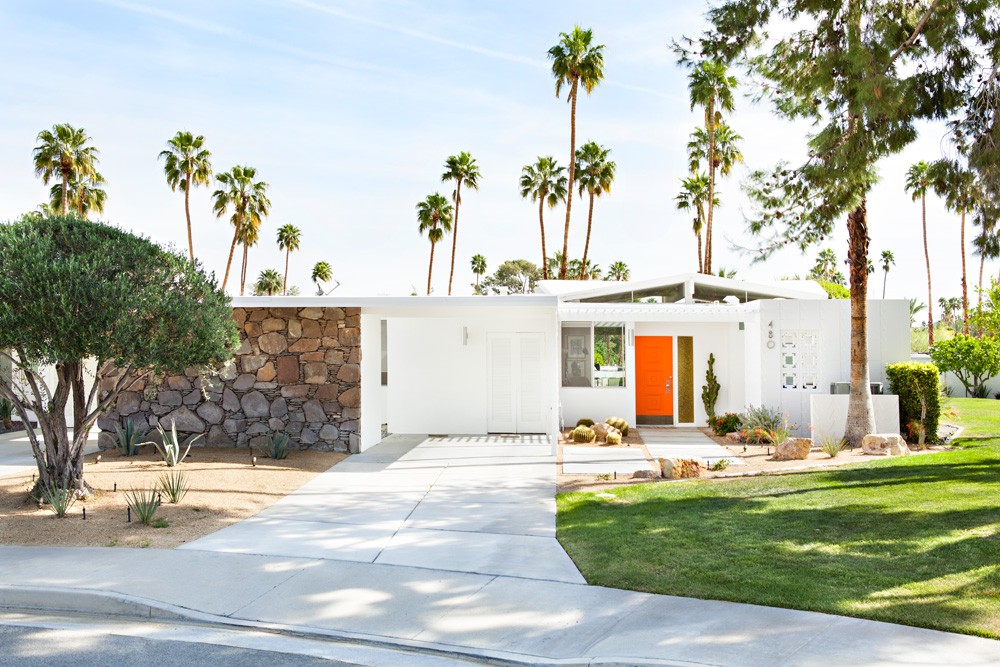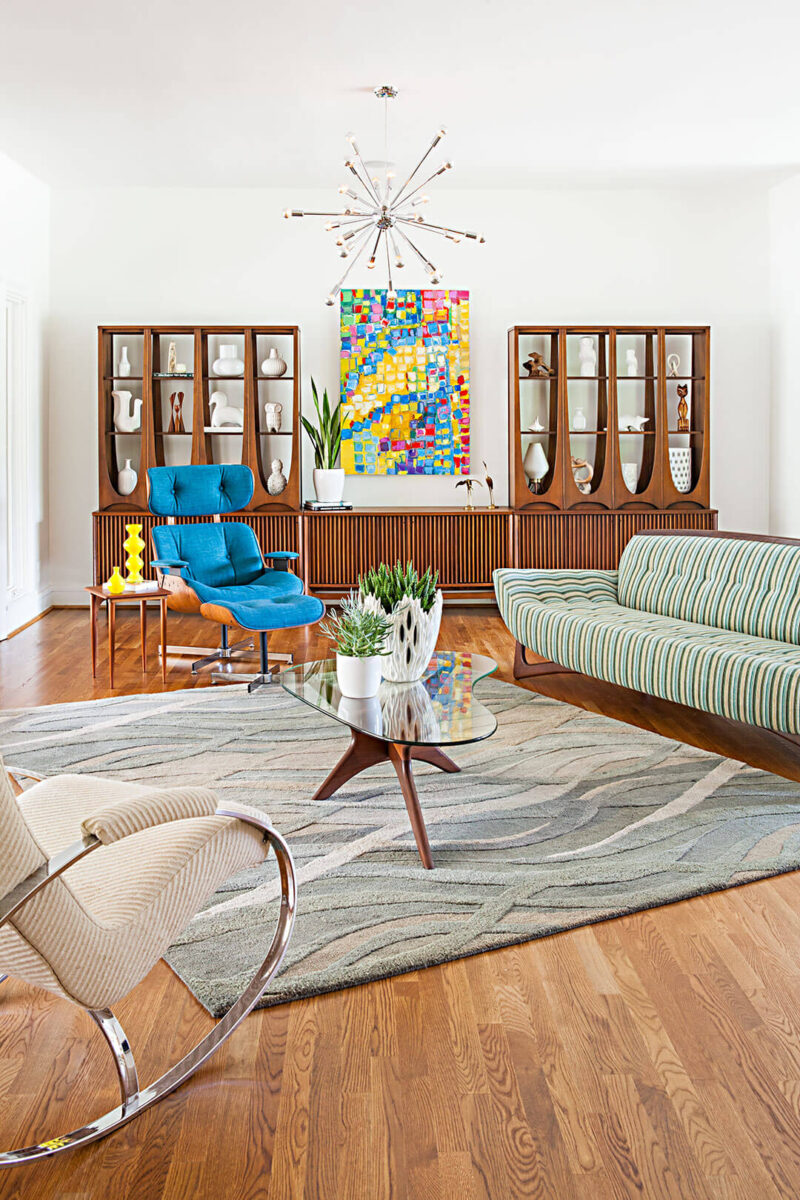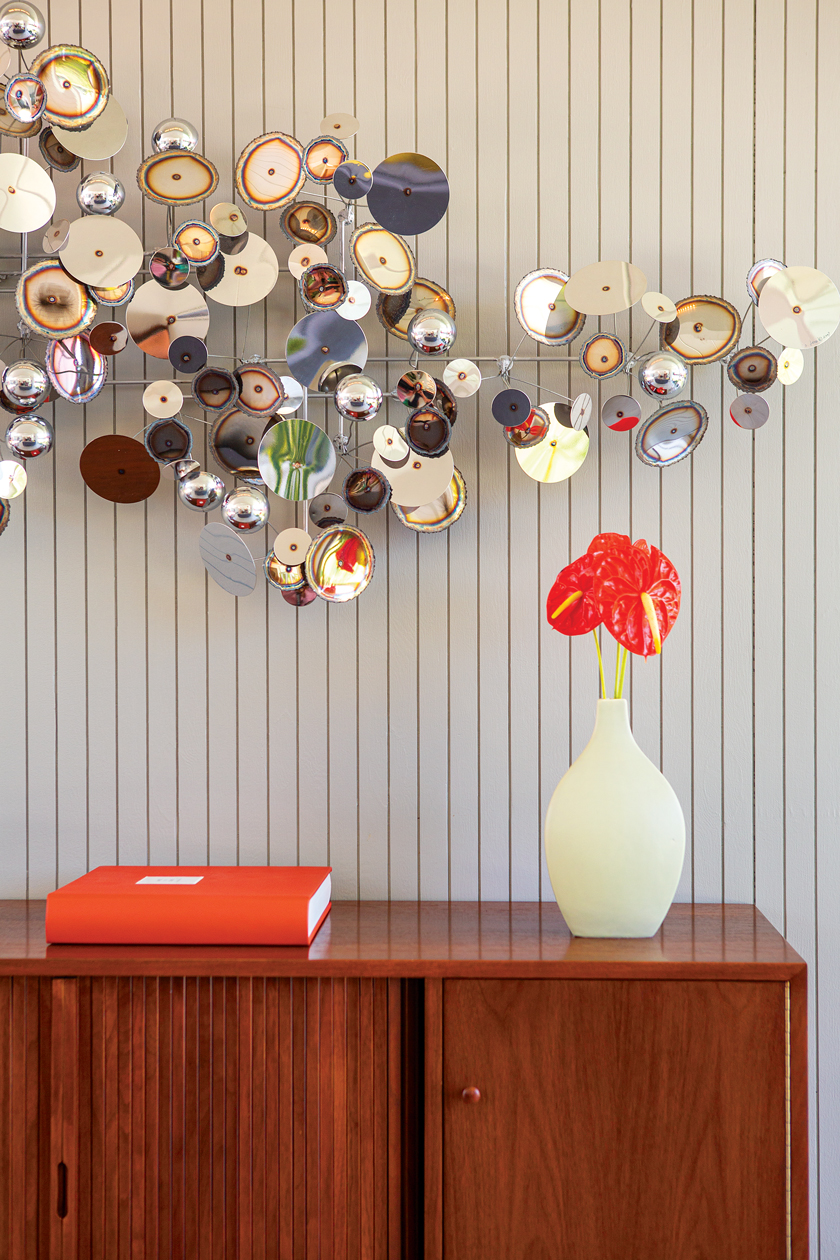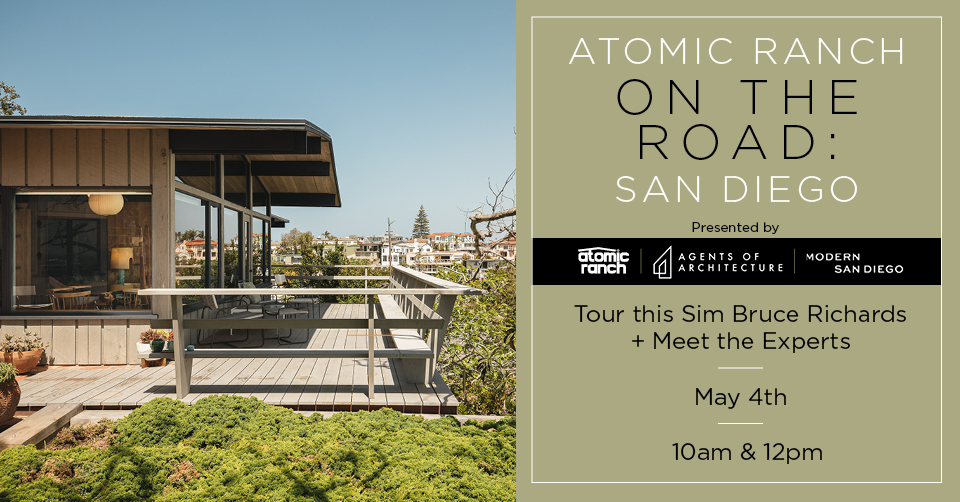Have you been faced with the question, “What is Mid Century Modern“? Perhaps it came from a curious friend when they first visited your retro home, or maybe you are asking it today. Either way, we’re answering that oh-so-common question.
So, What is Mid Century Modern?
We use the phrase “Mid Century Modern” (MCM) a lot around here assuming you already know, but, hey, no shame if you’re not quite sure! We’re here to help.
Some helpful starting points are to hang around Atomic Ranch and get immersed in the style. You’ll start to recognize trends and names. Peruse the website, thumb through a print issue or curl up with the book! Another helpful source is this article by Hillary Brown.

Vintage Mid Century Modern
One thing that’s confusing about the phrase is that it can sometimes refer to architecture and design from the end of World War II through the 1950s, 60s, and tapering off by the mid 70s, but sometimes it also refers to design today that is in the style. It’s really a stylistic language more than a matter of date. Another thing to note is that just because something was designed in the mid century era doesn’t necessarily mean it’s Mid Century Modern. The “modern” part is key. The architects and designers who shaped the style were looking to forge something new, aiming to make good, museum-worthy design accessible with the new materials and production methods available.

Sleek and Innovative
Innovations developed during WWII meant that new materials (hello, bent plywood, fiberglass, foam, aluminum, steel, and plastic laminates). So too the postwar population boom influenced the proliferation of Mid Century Modern architecture in the cities and suburbs that sprang up to accommodate the baby boom.
There’s some background, but that doesn’t tell you what it looks like. It’s characterized by sleek, clean lines, geometric shapes, sometimes alongside organic ones. Because the designers were committed to re-envisioning traditional design, the “modern” aspect continues to resonate. For some who grew up in the style, it’s nostalgia, but for others who did not, there’s a kindredness in the innovative quality that still feels contemporary or even futuristic.
Eero Saarinen’s Tulip chair, for instance, used the new material of molded fiberglass to address “ugly, confusing, unrestful world” in traditional table and chair design and came up with a sleek pedestal design instead. As knowledgable and enthusiastic collector Martin McGee points out in our interview with him, the Tulip chair was used in Star Trek. The latest Matrix film includes an Eames Lounge Chair. All to say, while birthed in a definite historical moment, Mid Century Modern design is also surprisingly “modern” even now.
Designers of the era were committed to blurring the lines between high and low art and making good design accessible. For this reason, their names are attached to their designs the way artists are known for their paintings. If ever you have heard of Eero Saarinen, George Nelson, Charles Eames, Harry Bertoia, or Isamu Noguchi—this point proves itself.
Two Stylistic Approaches
Like any design movement, there are subtleties in approach. Probably the most obvious one when it comes to Mid Century Modern is industrial vs. natural materials.
“American-based modernists loved industrial materials and the efficiency of mass production, while their counterparts in Scandinavia (the Soft Modernists) were dedicated to the longstanding tradition of crafting their chairs and tables out of natural elements, like wood and leather, favoring the handmade to the mechanical processes,” writes Hillary. “The result was exquisitely made pieces that were as celebrated as much for their quality as for their simplified, modern forms — think Hans Wegner’s Wishbone Chair or Alvar Aalto’s gently curving birch-and-beech wood chair.”
For more on Scandinavian design, read on here. For more on the industrial edge of Mid Century Modern, which is a subset sometimes known as Space Age Design, read more here.
Looking to get up to speed on the names and style of Mid Century Modern design? Keep reading our Modernist Index. Here at Atomic Ranch, Mid Century Modern style is our bread and butter! Subscribe to the print issue, buy the book, and don’t forget to follow us on Instagram, Facebook and Pinterest for more Atomic Ranch articles and ideas!













